How to choose a pump for pumping sewage: a complete classification and analysis of models
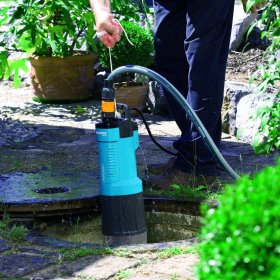
A rare owner of a private house has the ability to connect to the city sewer. More often, the sewer system is autonomous, and its maintenance is entirely on the shoulders of the owner. In urban conditions, a cesspool truck is called for cleaning the sump, but the longer the distance from the city to the house, the more expensive each call is. In this case, it is more profitable to buy sewage pumps and pump them out with their help.
What pumps are used for pumping effluents?
Depending on the level of wastewater contamination, two types of pumps are used: drainage and fecal. Sometimes they are confused, but these systems have different functions and there are differences in design.
If you need to pump out water from a flooded basement, pool, sump, which gets only contaminated water from a washing machine or dishwasher, then drainage pumps for sewage are suitable. They are designed for pumping liquids that do not contain solid particles over 50 mm.
Read more about drainage machines in our article *How to choose a drainage pump: what to look for when choosing a unit?*.
A fecal pump is capable of pumping out not just contaminated water, but with feces and other solid particles up to 80 mm in size, because it has enlarged flow channels. In addition, many models are additionally equipped with a special device, crushing all household waste, whose parameters are larger than the diameter of the inlet. Such a sewer pump with a grinder copes with solid waste using an impeller in which a round knife or cutting edge is installed.

The grinding mechanism of the drive shaft is the main difference between the design of the fecal pump from the drainage
About fecal pumps there is also a separate article: *How to choose a fecal pump for a summer residence and an apartment: how it works and what to look at?*.
The main 4 groups of fecal pumps
There are several types of devices for sewage. The presence or absence of a grinding mechanism, the installation method, the temperature of the pumped effluents and the type of structure are taken into account. Consider what their differences are.
- Pump without grinder for pumping cold wastewater. This is the cheapest type of apparatus of all groups. Designed for pumping liquid from a pool or clean waters, for example, groundwater, flooding basements during the spring flood. The maximum temperature of the effluent should not exceed 40˚.
- Pump without grinder for pumping hot wastewater. These devices are capable of pumping out contaminated, but without solid particles water with a temperature of up to 90˚. Such drains are in saunas, baths.
- Pump with a grinder for pumping cold domestic wastewater. The most popular type of apparatus, because it copes with all the sewage from the toilet.Hair, paper particles, hygiene products (tampons, cotton pads, etc.) and faeces that fall into the water can easily be crushed into small particles by a cutting mechanism and pumped out together with contaminated water. It is calculated on temperature of drains no more than 40˚.
- The pump with a grinder for pumping hot drains. It is reminiscent of the previous type of system in structure, but it is able to raise sewage up to a temperature of up to 90˚. Ideal for baths equipped with a toilet. With the constant use of such a device, there is practically no clogging of the sewer system.
That's all, actually - it’s easy, isn't it? But immediately brings clarity.
Types of systems by installation method
Now consider the classification according to the installation method.
Option # 1 - outdoor pump
This unit is installed at the top of the sewer well, and only intake hoses are lowered into the wastewater.
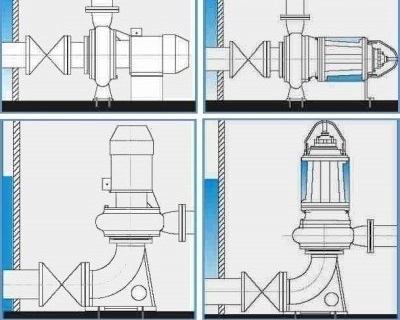
Dry installation options: outdoor pumps do not have shredders, so it is not recommended for pumping fecal water
Option # 2 - Submersible Pump
This type of equipment runs completely submerged in wastewater. To fix it at the bottom of the cesspool, use guides and an angled tap. Please note that the maximum immersion lengths are different for different manufacturers. It is also affected by the type of construction.
For example, horizontal systems can operate at depths of up to one hundred meters, and vertical - only up to seven meters. Therefore, calculate in advance what depth your sump has to choose the best option.

Submersible pumps must be made of high-strength materials capable of resisting corrosion in aggressive environments
Option # 3 - semi-submersible pump
This system is discharged into drains halfway (the engine is at the top, the pumping part is immersed) and fixed with a float. Semi-submersible pumps are not recommended for sewage with feces, because they do not have shredders.
Of the three types for the needs of sewage, submersible equipment is most often used.
The nuances of selecting a specific model
Having decided on the type of pump, you can go shopping. But be prepared that sellers will offer several similar models from different manufacturers, which may vary in price.
How to choose the best option? To do this, pay attention to the following nuances:
- The material of the apparatus. Since the pump is designed to operate in an aggressive environment where decomposition reactions are constantly taking place, the material of the casing and other elements of the equipment must withstand such conditions. Otherwise, corrosion will instantly eat him up. The most resistant materials are cast iron, stainless steel and plastic.
- The structure of the impeller. The level of particle grinding depends on the device of the impeller. Knives have higher productivity than cutting edges. In addition, some models provide the possibility of self-cleaning of the grinding mechanism, which helps the equipment to work without interruptions.
- Power. When choosing the power of the pump, pay attention to its performance. It happens that a less powerful system provides the same level of performance as a stronger device. In this case, you will save on electricity. But on the other hand, the power reserve will allow the device to work "without tension", which means that it will wear less.
- Management Features. Give preference to those models that are easy to control, because the brains are located in an accessible place.
The next step after purchase should be the correct installation of the sewage pump. It is desirable that it was produced by specialists, because there are many nuances that affect the quality of equipment.

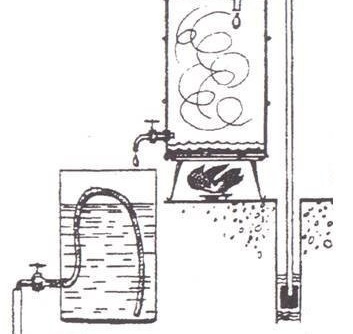
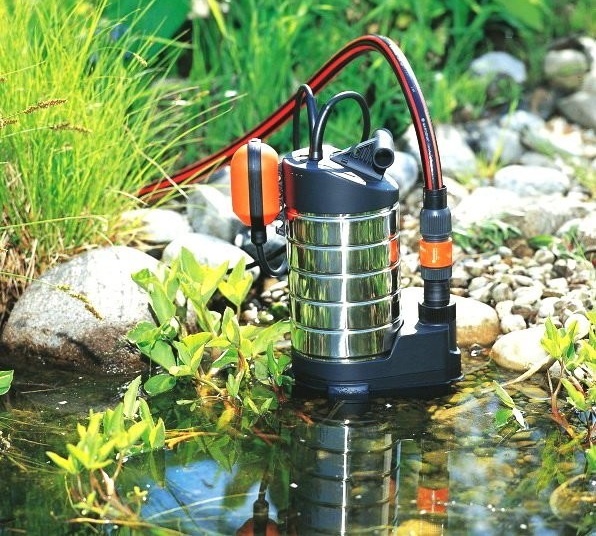
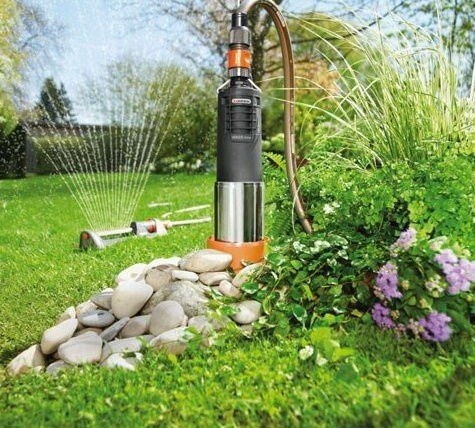
1 comment